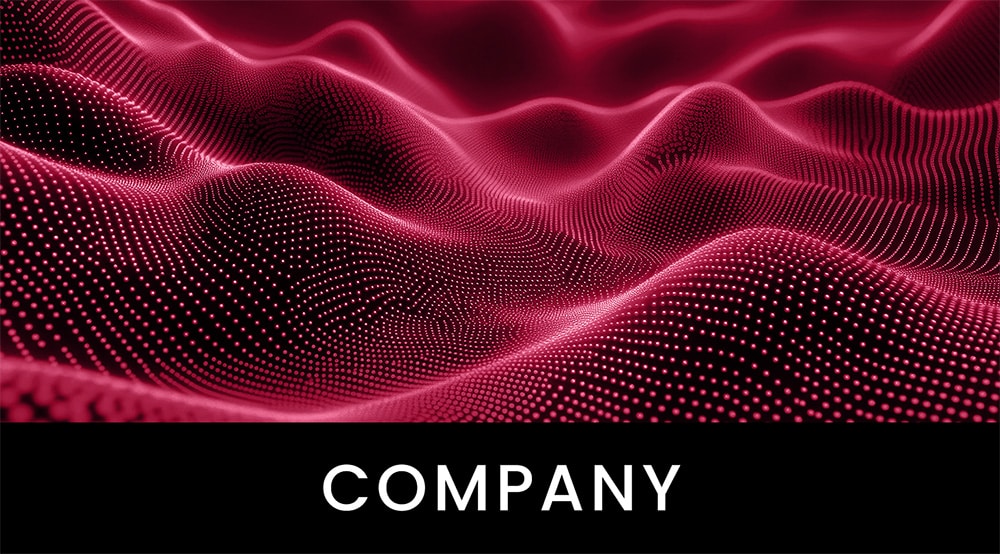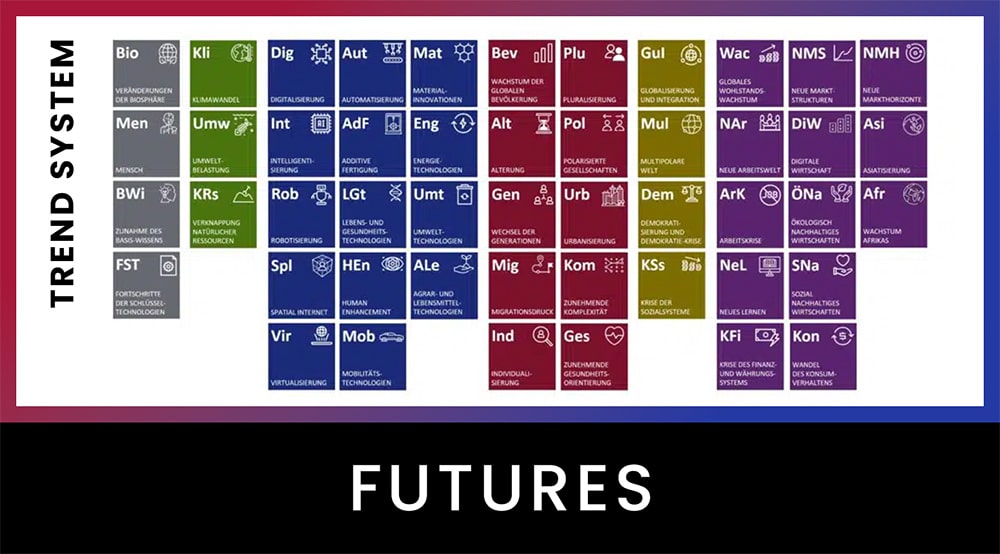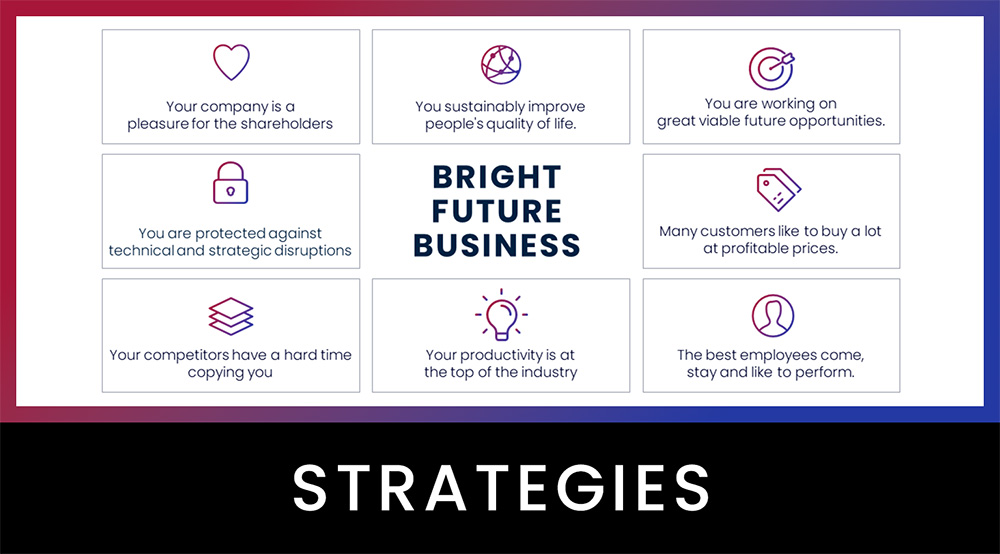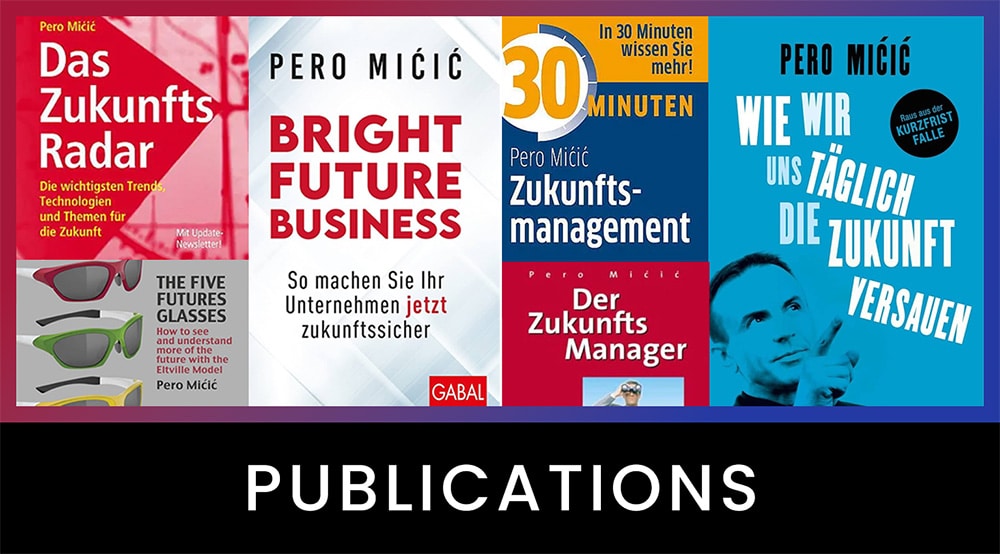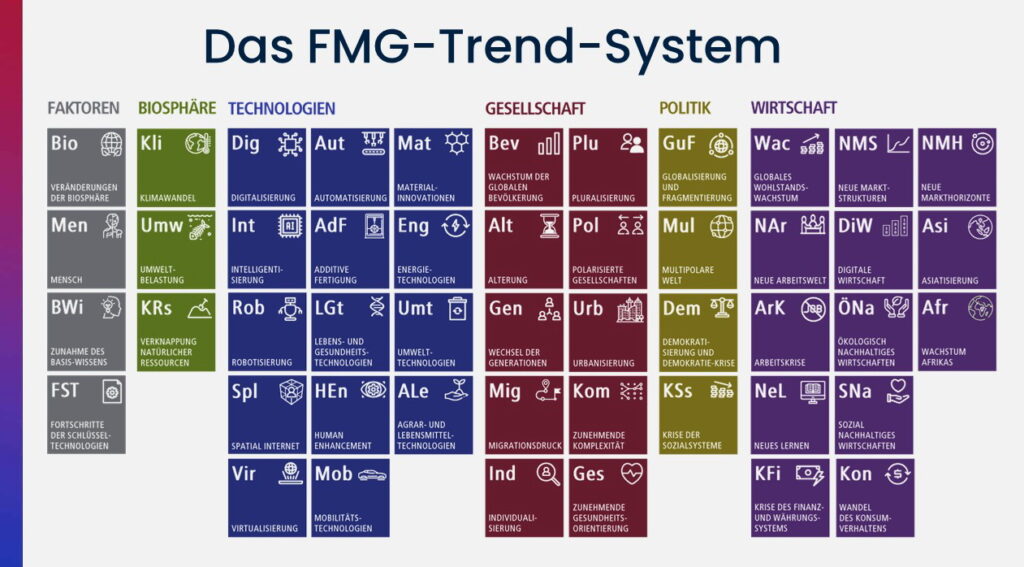Megatrend urbanization
From the FMG Trend System: For your future-proof company
Urbanization as a driving force in many regions
The world is becoming more urban: more than half of the world’s population already lives in cities, and the trend is rising. For many people, cities are attractive places to live, work and learn. They offer access to education, infrastructure, culture and social networks. The global urbanization trend is profoundly changing society, the economy, the environment and politics. Cities are becoming a stage for global challenges, but also a source of innovative solutions. The question is no longer whether the trend towards urbanization will continue, but how cities of the future can be designed to be resilient, sustainable and liveable. To the overview of all megatrends
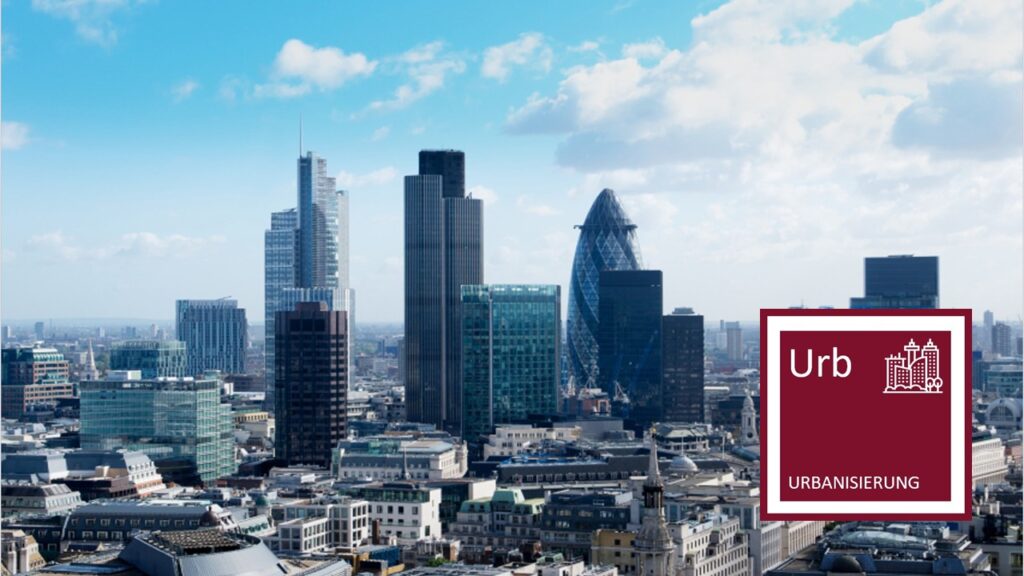
What does urbanization mean for companies?
Urbanization is changing markets and business models: New urban lifestyles, higher mobility demands, denser infrastructure and intense competition for talent require new strategies. Companies benefit from access to large labor and sales markets, but are also under pressure to take greater account of ecological and social aspects. Those who understand urban target groups can develop new business models, from smart mobility solutions and sustainable construction to localized services and platforms.
- Societies are changing profoundly, in their structure, their values and their behavior. The megatrend of urbanization is just one of many that could be relevant for the future of your business.
- FMG’s trend system makes these complex social developments tangible.
- In addition to megatrends from society, politics, the economy, technology and the biosphere, it also includes future factors as drivers of change.
- You can find out more about megatrends on our page Overview of all megatrends
Key developments in urbanization
1. boom in the cities
Cities around the world are growing in importance, size and appeal. Young people in particular are drawn to cities because they expect better education, job and leisure opportunities there. Investors, companies and creative artists are also contributing to the dynamism of urban areas. As a result, cities are booming, districts are changing, rents are rising and with them social tensions. At the same time, a wide range of innovation potential is emerging, making urbanization highly relevant for companies.
Partial developments:
Gentrification: gentrification of inner-city residential areas leads to rising rents and displacement of lower-income groups.
Infrastructure as a driver of growth: transportation, energy, water, education and culture as the basis for economic prosperity.
Consumption and leisure as a location factor: Urban lifestyles are increasing the importance of places of experience, parks, gastronomy and culture.
Urban resilience: cities strengthen their ability to adapt to crises (e.g. climate, health, migration).
Competition for space in urban areas: A growing challenge is the simultaneous use of the same area for living, working, mobility, recreation, biodiversity, energy production, cooling and food. Urban planning is increasingly becoming a complex task of negotiating between competing demands for use.
2. megacities
Megacities are cities with several million inhabitants and they are growing rapidly. In Asia, Africa and Latin America in particular, ever larger urban agglomerations are emerging. Urbanization here is associated with opportunities, but also with major challenges. Infrastructural overload, environmental pollution and social inequality are among the main risks.
Partial developments:
Growth without planning: Uncontrolled urban growth leads to slum formation and infrastructure bottlenecks.
Polarization of urban space: gated communities vs. informal settlements.
Global power shift: megacities are becoming economically stronger than entire nation states.
Smart city approaches: Digitalization helps to overcome urban challenges.
3. eco-cities
The future of the city is green, at least in the vision of many urban future concepts. Eco-cities stand for the consistent integration of ecological principles into urban development. The aim is to combine quality of life, environmental compatibility and economic innovation. Cities such as Copenhagen, Singapore and Reykjavik are regarded as pioneers in this respect. In many developing and emerging countries, complete eco-cities are currently being built on greenfield sites.
Partial developments:
Sustainable infrastructure: car traffic is reduced, local transport and cycle paths are promoted, energy supply is decarbonized.
Circular city: waste avoidance, resource conservation and urban material cycles are becoming increasingly important.
Urban agriculture & food security: Green roofs, community gardens and vertical farms strengthen the local food supply in cities.
Multifunctional urban planning: The pressure on urban areas requires intelligent multiple use. The same area often has to be a recreational space, biodiversity island, traffic area, infiltration area, cooling zone and location for energy production or housing at the same time.
Tech-based control: sensor technology, digital twins and AI help to reduce emissions and better manage resource flows.
Lighthouse projects & smart cities: Pilot cities serve as testing grounds for new technologies and governance structures.
Conclusion
Urbanization is changing markets, consumer behaviour and location decisions.
Cities are laboratories for new business models, infrastructure and technologies.
Access to talent and innovation clusters is easier in urban areas.
Social and ecological issues in urban areas are becoming increasingly relevant to business.
- Anyone wishing to strategically tap into the megatrend of urbanization can use the Future Radar Program to systematically identify and exploit future market opportunities.

